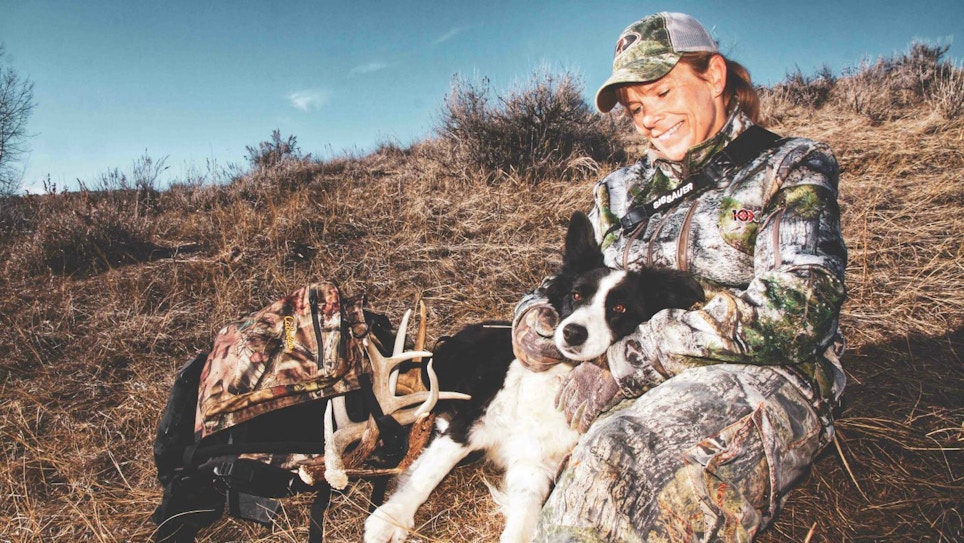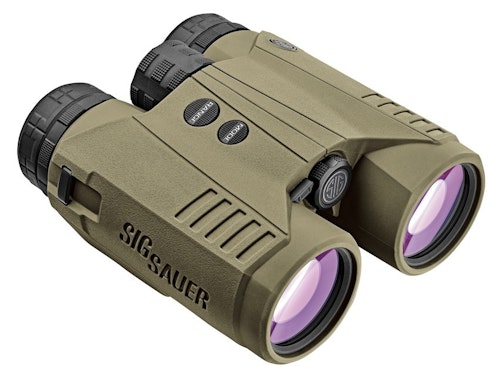
If you bring your dog along when searching for sheds, make sure it’s restrained to ensure you don’t blow whitetails out of their sanctuaries.
You wouldn’t hunt whitetails like you shop at Costco, right? Hunting like a coupon-frenzied shopper would most likely be counter-productive. The same is true for shed hunting. To maximize the outcome while minimizing your impact, you need to search for sheds with care. Ignoring this simple procedure could jeopardize future deer hunts with varying consequences.
Early Bird
All whitetail environments are not created equally. Most of North America goes dormant during the winter months, but whitetails living in the extreme southern tier of the nation rarely deal with snow, ice or subzero extremes. The rest of team whitetail, however, lives life in true winter conditions. Harvested crops, overgrazed food plots and winters like those the Abominable Snowman experiences define their life. Their fantasy escape to the Gulf Coast is the hope of a fleeting warmup in February.
In brief, most deer in the heart of whitetail country are at some level of stress. Bucks have shed extra pounds rutting, up to 20 percent in some cases. Does are robbing their own bodies to grow a pair of fawns, and the cupboards are as bare as a grocery store when hurricane warnings sound. Too much stress can cause bucks to shed antlers early, does may abort fawns, and the Grim Reaper is always waiting just outside the door.
Whitetails begin dropping antlers soon after the first of the year, although, the majority drop in February and March across most of the country’s whitetail zones. Of course, the biggest bucks tend to shed first due to expending more testosterone in the rut. And as mentioned, a stressful winter could also lead them to drop early.
Traipsing around the woods in a Costco, food-sampling mindset has potential to accentuate that stress. Bumping deer out of cover to pick up the first shed antlers of the year causes deer to burn extra calories, escape to cover they don’t know, and possibly create opportunities for predators. Any or all could lead to changes in your fall hunting lineup.
I understand that you don’t want to lose that shed antler to warm-day squirrels or a coyote looking for a bone to chew. Nevertheless, an overly aggressive approach to your shed hunting has the potential to increase stress and cause disruptions to the world of whitetails. The best plan of action is to reschedule your shed hunting for later on when the landscape becomes more welcoming.
Disruptive Behavior
Stresses vary from winter to winter; some years your area whitetails could be living The Bachelor lifestyle, while other winters could resemble the horrors the Donner party experienced. Regardless of the winter, one thing is certain: If you hike through whitetail habitat in the middle of winter like you push a shopping cart through Costco, it’s going to be disruptive.
Stress aside, most whitetails don’t appreciate you picking through their food pantries, snooping in bedrooms and rambling down their trodden byways that show wear-and-tear from survival travel. Taking advantage of your self-assigned visiting hours could cause whitetails to abandon an area to find sanctuary where the “do not disturb” sign actually works.
Whitetails adhere to their homeland instincts, but slight shifts are not uncommon for survival. Several studies show that whitetails routinely leave preferred home territories — when pressured by humans or other predators — to seek out better winter habitat.
Shed hunting a small property or even a large property that sits adjacent to a Garden of Eden may cause whitetails to reconsider property boundaries. One past winter, one of my hunting buddies was all too eager to collect the sheds off of a potential “Booner” buck. His repeated shed hunting visits created enough chaos that the buck permanently moved to the neighboring property to finish the winter. The neighbor now has that amazing set of sheds, and the buck was a transient between the properties ever after.
Get On Their Schedule
Whitetails have a daily schedule. Much of the winter they spend the majority of their time bedded to conserve energy. In extreme circumstances, they’ll bed near food to minimize stress and conserve energy. The remainder of their time is spent browsing to create energy. Depending on the severity of the winter, deer may put some distance between food and refuge if it doesn’t burn too many calories.
Your job is to decipher their daily schedule and territorial use before pushing your shopping cart down the shed antler aisle. By observing from afar you can note the times whitetails are likely to be feeding, traveling and bedding. A good hunting app can help you map out this timetable with a satellite view. Plus, your firsthand observations will also provide insight on how many bucks are home along with the antler prospects to come.
Once you have the scoop on how whitetails are using a property, you can begin to hatch a non-disruptive plan to pick up their bony litter. Here’s an example. Say your whitetails leave bedding cover around 3 p.m. to make their way to a picked cornfield. Once they leave, you should have a good hour or so to sneak into the bedding cover from the backdoor and snoop through beds looking for sheds. Use the wind and scent-elimination products to remain invisible and undetectable.
This also works early in the morning at dawn before deer have returned to bedding cover, but you have to be careful. Sometimes winter whitetails bed early, especially weary bucks. So what do you do the rest of the day? That’s when you should walk open fields, food plots and any food sources outside of sanctuary cover. By midmorning, most whitetails have retired to retreats, leaving most food sources void of activity. You can also follow trails and fence lines that lead to and from bedding cover but stop short of busting deer. And if you shed hunt with friends, keep the chatter to a hushed tone — unlike your enthusiasm when you find a hot buy at Costco.
A binocular can help you peer into cover and extend your search without a foot invasion. Plus, it can help you spot whitetails and avoid a future disruption. Lastly, if you hike with your dog, make sure it is leashed, wearing its electronic collar, or listens to verbal cues such as soft whistles to stay nearby.
There’s nothing wrong with having a passion for shed antler hunting. And wanting to be the first in the woods is human nature. Putting your hunting nature to use will ensure your shed antler gathering remains low impact, lessening the consequences on already stressed deer.
Sidebar: Glass ‘Em Up
On your next shed antler excursion, if you do spot a bony object, weigh the consequences of whether you can slip in to pick it up — without causing a flagging blowout — with the Sig Sauer KILO3000BDX 10x42mm binocular.
This bino features SpectraCoat anti-reflection coatings that provide superior light transmission and optical clarity, perfect for shed finding from a distance. Additionally, their compact, lightweight magnesium housing and binocular-style eyecup make them ideally-sized to carry and use on your next shed hunting adventure.
To top it off, the KILO3000BDX is also one of the most advanced rangefinders on the market, perfect to range those moving antlers once the season rolls back around. Like all Sig Sauer products, it’s covered by their INFINITE Guarantee and Electronics Limited Warranty. MSRP: $1,559.99. Contact: www.sigsauer.com
Shed hunt images by Mark Kayser







